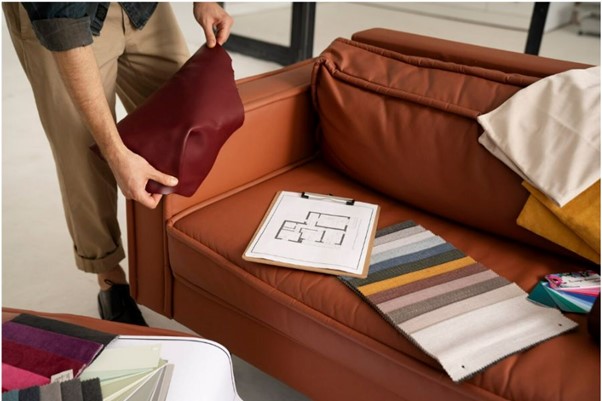
Innovative Materials in Modern Furniture Design: A Future Forward Approach
The landscape of modern furniture design is continuously evolving, with innovation at its core. One of the most exciting aspects of this evolution is the introduction and adoption of innovative materials, which are not only transforming the aesthetics of furniture but also its functionality and environmental impact. Let’s explore the world of contemporary materials that are setting new benchmarks in the realm of modern furniture design.
- A Shift Towards Sustainability
The call for sustainable practices has never been louder, and the furniture industry is listening. Designers are actively seeking materials that are eco-friendly, renewable, and have a smaller carbon footprint. Bamboo, reclaimed wood, and recycled plastic are gaining popularity, thanks to their minimal environmental impact and durable nature.
- High-Performance Fabrics

Modern living demands furniture that can keep up with our dynamic lifestyles. High-performance fabrics, which are stain-resistant, durable, and easy to clean, are becoming a staple in modern homes. These fabrics ensure that beauty does not have to be sacrificed for practicality, making them perfect for households with children and pets.
- Biodegradable and Compostable Materials
In an effort to reduce waste and promote circular design principles, designers are experimenting with biodegradable and compostable materials. Mushroom mycelium, hemp, and organic resins are being molded into furniture pieces that are not just stylish but also kind to the planet.
- Smart and Responsive Materials
The integration of technology into materials has given rise to smart and responsive furniture. Thermochromic materials change color with temperature, while shape-memory alloys can transform a piece’s shape based on external stimuli. These materials add an interactive and playful element to furniture design.
- Lightweight and Flexible Materials
The modern urban dweller values flexibility and mobility. Lightweight materials such as aluminum, carbon fiber, and engineered wood provide strength without the bulk, making it easy to rearrange and transport furniture as needed.
- Luxurious and Sustainable Synthetics
Synthetic materials are shedding their reputation for being cheap and low-quality. Today’s engineered fabrics and leathers offer a luxurious feel, aesthetic appeal, and longevity, all while being more sustainable and ethical than some of their natural counterparts.
- Combining Tradition with Innovation
Innovative materials are not replacing traditional ones; instead, they are being combined to create hybrid pieces. Wood is being paired with recycled metals, and natural fibers are being woven with high-tech yarns, resulting in furniture that honors the past while embracing the future.
- Embracing Textures and Patterns

Modern materials are not just about performance and sustainability; they also offer a plethora of textures and patterns. 3D printing, laser cutting, and other technologies enable intricate designs and textures, adding a layer of visual interest and sophistication to furniture pieces.
- Future Forward: What’s Next?
As research and development in materials science continue to advance, the future of modern furniture design is bound to be exciting. We can expect to see more self-healing materials, biodegradable synthetics, and even furniture that can adapt its firmness and temperature to the user’s preference.
Conclusion
Innovative materials are revolutionizing modern furniture design, opening up new possibilities in aesthetics, functionality, and sustainability. As we embrace these materials, we are not just creating furniture; we are crafting experiences, making statements, and contributing to a more sustainable future.



